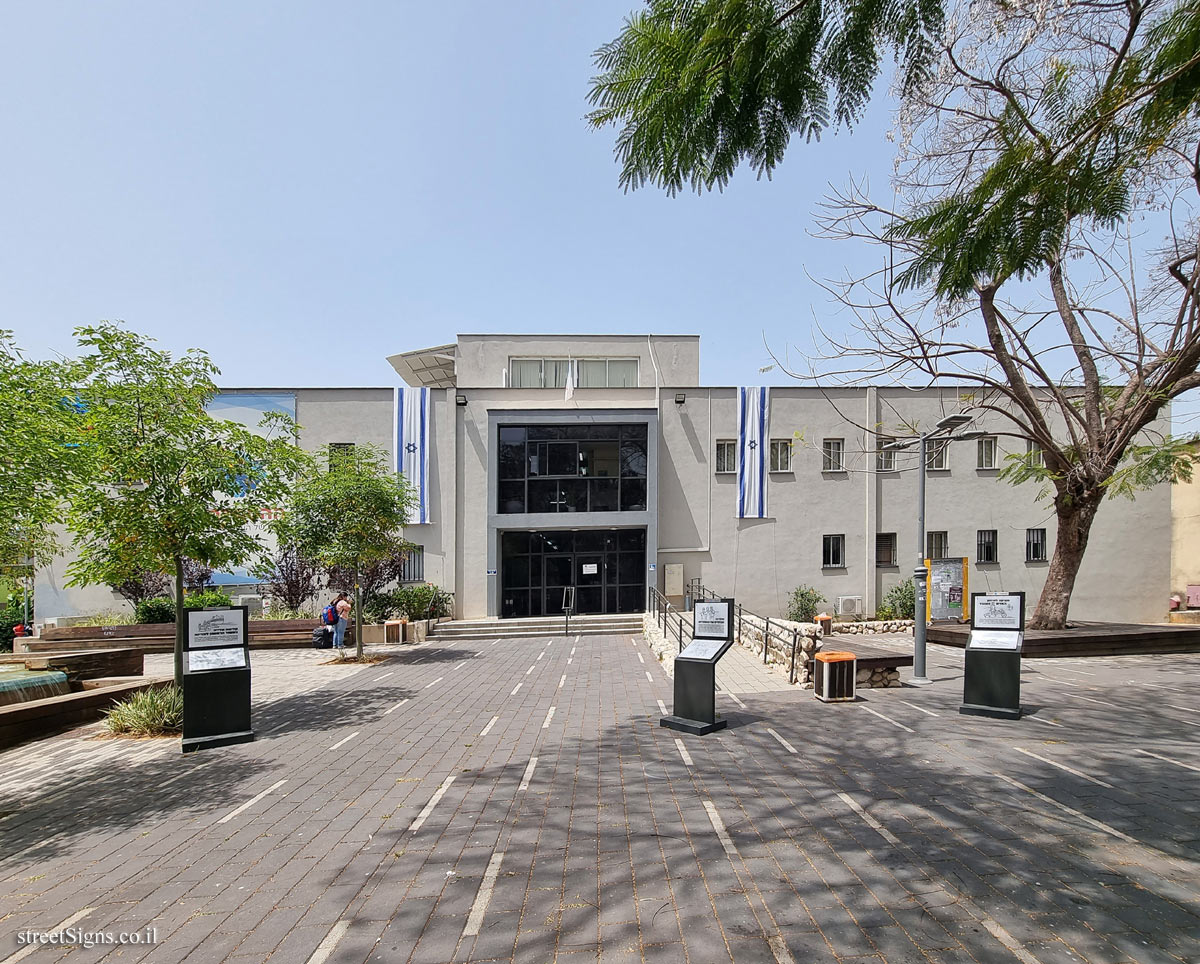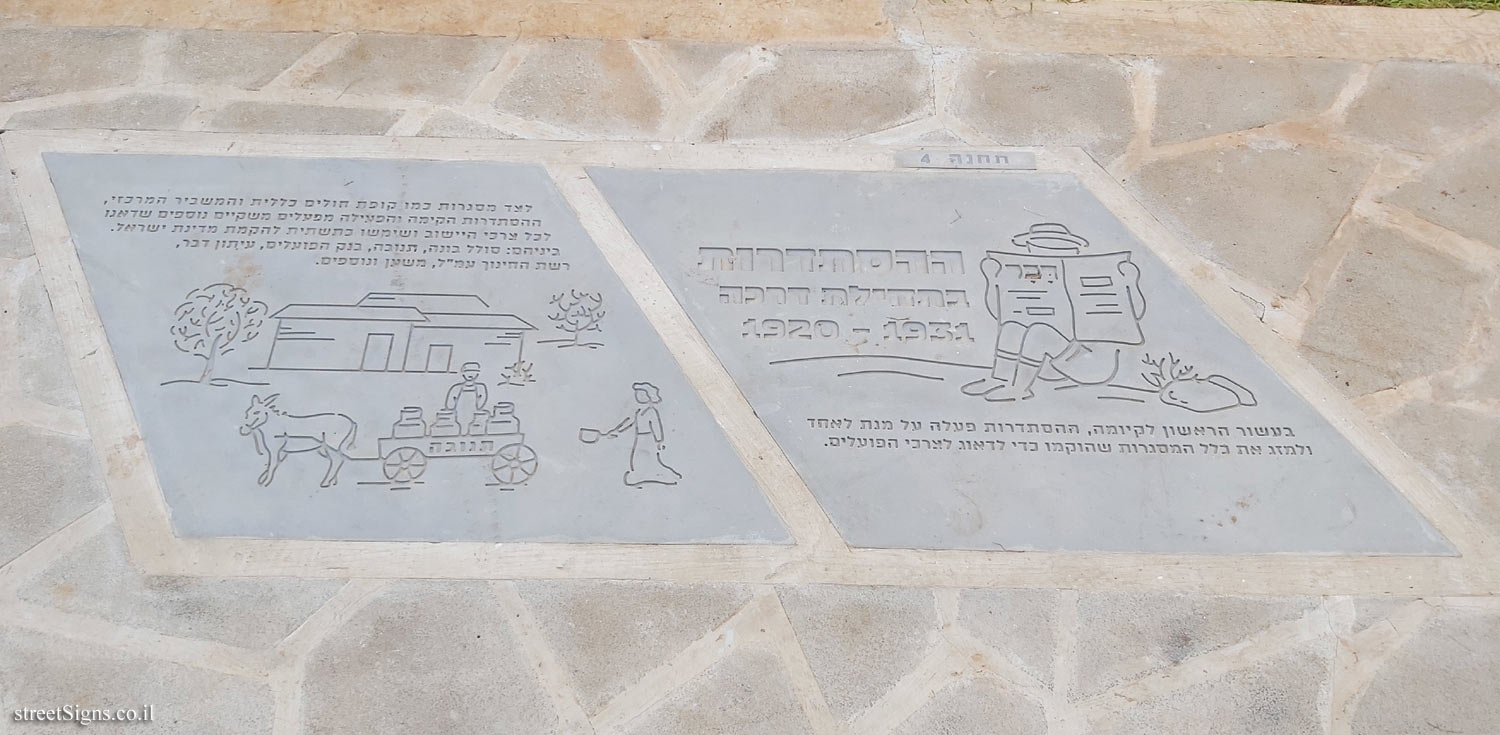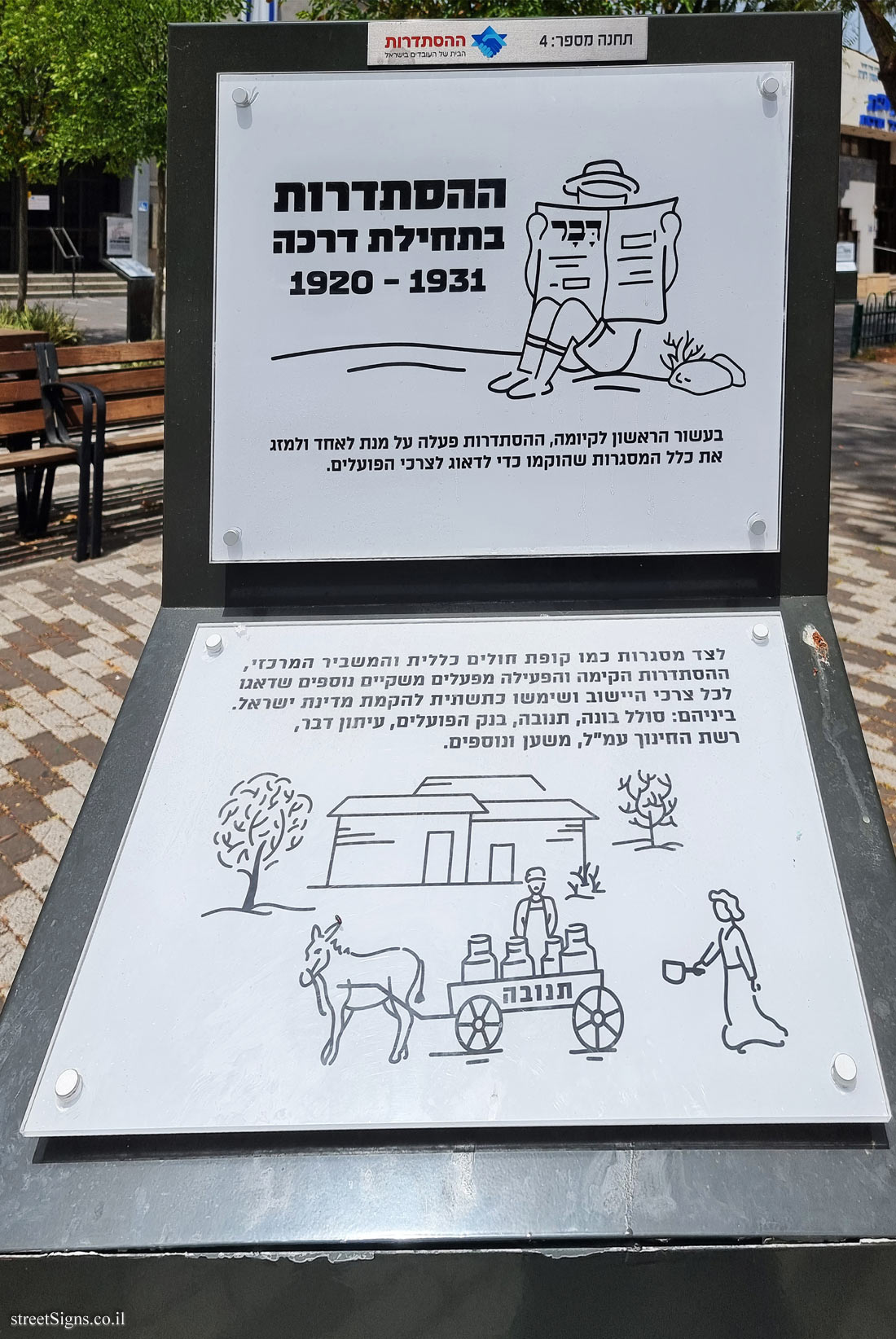One of the stations in the Histadrut Garden in Rishon Lezion, inaugurated in July 2020, with signs marking milestones in the history of the Histadrut.
The illustrations at the trail stations were made by Nofar Tzarfati.
A broad view of some of the stations was taken that day by the same photographer
 Click for a larger image
Click for a larger image Three months later, it was inaugurated in Tel Aviv next to the Histadrut building, the Histadrut Garden, with the Youth Movements Trail, which contains the same signs with the same text and illustrations (but the signs are made of stone and are on the ground)
 Click for sign's details Translation of the text on the sign
Click for sign's details Translation of the text on the sign:
Station number: 4
Symbol of the Histadrut - the home of workers in Israel
The Histadrut at the beginning of its path 1920-1931 In the first decade of its existence, the Histadrut worked to unite and merge all the frameworks established to take care of the needs of the workers.
Along with frameworks such as Clalit Health Fund and the Central Hamashbir, the Histadrut established and operated other economic enterprises that took care of all the needs of the locality and served as the infrastructure for the establishment of the State of Israel, including: Solel Boneh, Tnuva, Bank Hapoalim, Davar, Amal Education Network, Mishan and others.
Learn about:


 Click for a larger image
Click for a larger image  Click for sign's details
Click for sign's details